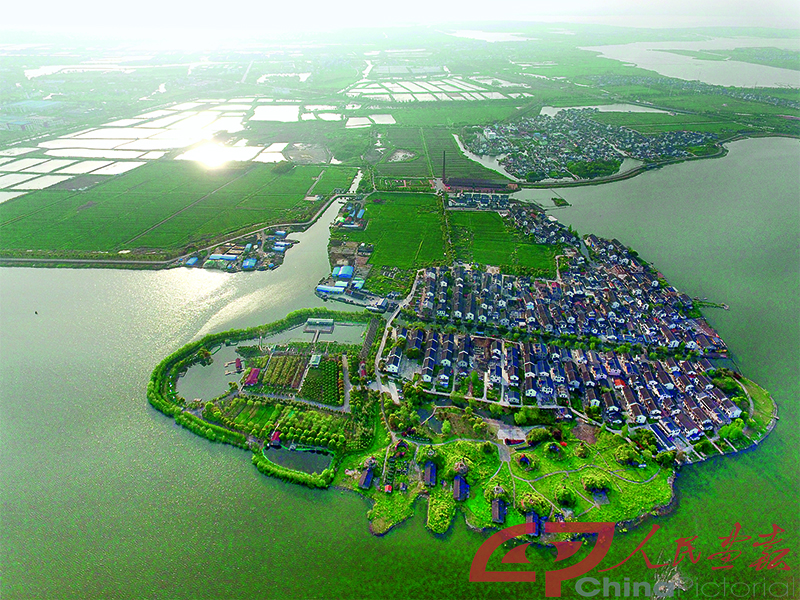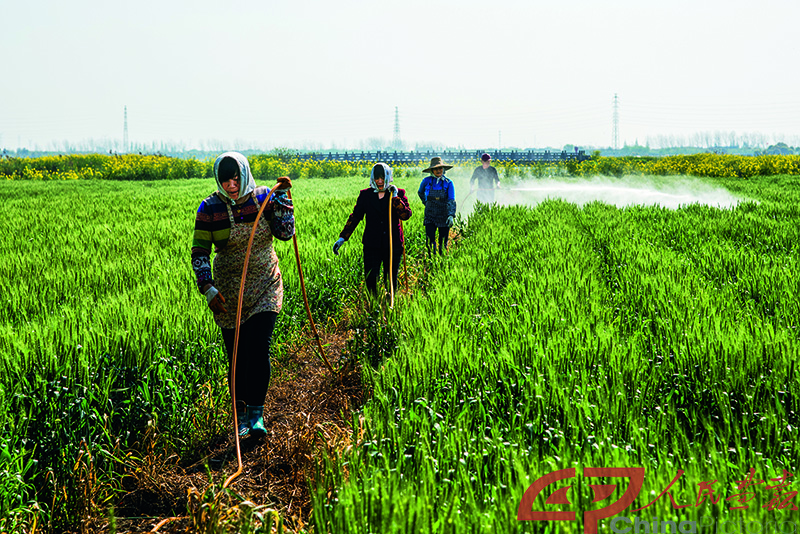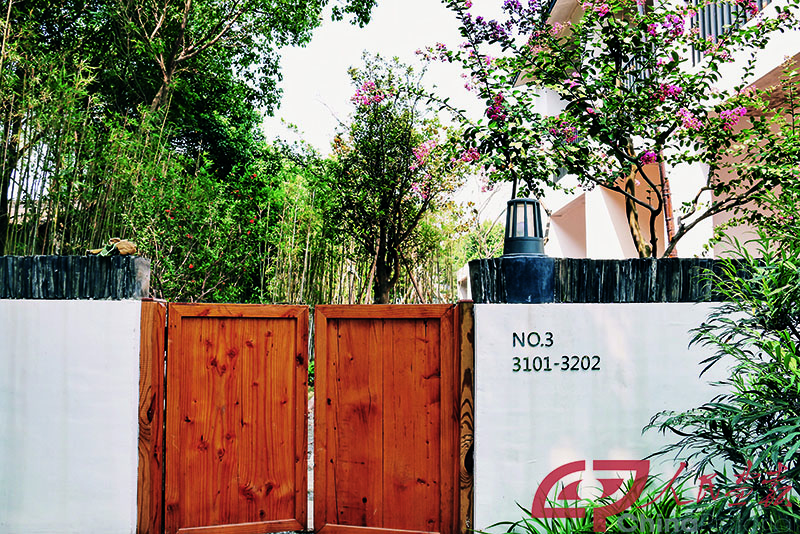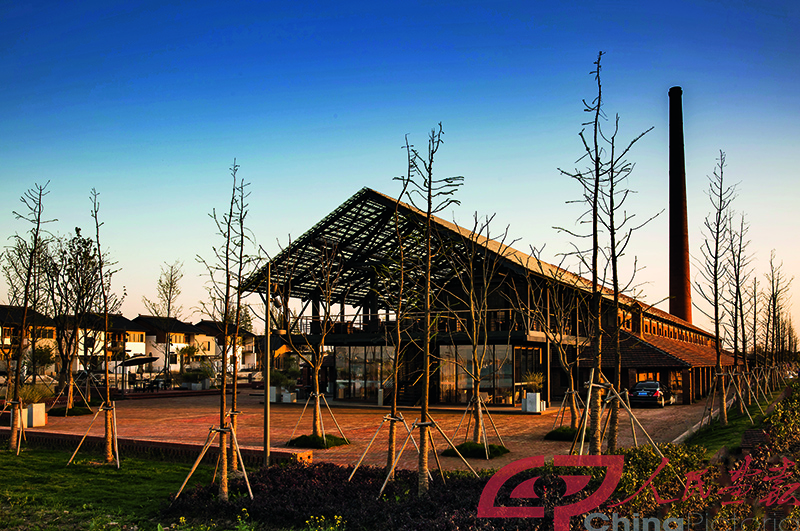Awakening Sleeping Rural Assets Innovative Development of the Collective Economy in Kunshan

Invigorating idle assets and collective property rights in rural areas is an essential component of China’s rural vitalization strategy. Chinese President Xi Jinping, also general secretary of the Communist Party of China (CPC) Central Committee, pointed out in his report to the 19th CPC National Congress that China “will press ahead with reform of the rural collective property rights system, safeguard the property rights and interests of rural people, and strengthen the collective economy.” Methods to awaken sleeping rural assets and give equal status to collective economic organizations with other market entities are being explored in regions across the country.
In recent years, the city of Kunshan in eastern China’s Jiangsu Province has made unremitting efforts to promote new rural collective economic reform, revitalize rural collective assets through market-oriented means and innovate the mechanism for collective assets operation and protection. By doing so, it has injected new momentum and vitality into agricultural production. By formulating and implementing targeted policies, Kunshan has enabled local farmers to enjoy greater benefits from the entire industrial chain through rural collective economic reform.
Changyun Village: Developing Modern Farms
“Take a look at the agricultural fields under my management,” grins Yu Jiaming. “Each kilogram of rice we produce can be sold for 40 yuan.” A contracted professional farmer in Changyun Village, Kunshan’s Jinxi Town, Yu manages 20 hectares of paddy fields.
Changyun Village has 40 contracted farmers like Yu. They are nicknamed “Rice CEOs.” According to contracts, the output of the paddy fields they manage must exceed 300 kilograms per mu (0.067 hectares), and contracted farmers are eligible for bonuses of 10 percent of the value of rice above the production quota. This method contracts farmland to professional farmers who have advantageous expertise and enthusiasm for farming.
“You wouldn’t see so many well-cultivated rice fields here a few years ago,” asserts Yu.
Back then, local farmers often converted their farmland into ponds to farm fish and shrimp because they were more profitable.
In 2012, Changyun Village decided to form a land stock cooperative adopting market-oriented collective economic operation mechanism. Villagers joined the cooperative by restoring fish ponds to farmland. By doing so, the village’s paddy fields were bumped up to more than 2,000 mu. The village also established a modern collective farm featuring integrated rice sowing and harvesting and contracted it to professional farmers.
According to Yu Quanyuan, director of the Economic Service Center of Jinxi Town, villagers collect rental payments and dividends from the collective farm. From 2012 to 2016, per capita annual income of local villagers increased from 21,000 yuan (US$3,260) to 31,000 yuan (US$4,820), and professional farmers’ annual salaries rose from an average of 40,000 (US$6,220) to 50,000 yuan (US$7,770).

Farmers in Changyun Village work in paddy fields. In 2012, Changyun Village established a land stock cooperative, and local farmers became shareholders with their croplands as investments. By doing so, the village’s paddy fields were bumped up to more than 2,000 mu.
Zhangpu Town: Building Industrial Parks
Mr. Wang, a native of Kunshan’s Zhangpu Town, rides an electric bicycle to his workplace at the Kunshan German Industrial Park every work day. “Many natives used to work outside as migrant workers in the past,”he recalls. “Since the industrial park was completed, many returned to find jobs here so that they can live together with their families.”
Previously, small factories and workshops could be found in almost every village of Zhangpu Town. As increasing numbers of villagers left to work in cities, many of those factories and workshops closed. In 2012, the government of Zhangpu Town decided to reorganize surviving village factories into Kunshan Lepu Qiangcun Investment and Development Co., Ltd., with the purpose of revitalizing idle assets of the 20 villages under its jurisdiction.
“The 20 villages took stakes in the company with their funds and assets, and villagers became shareholders,” explains General Manager Fan Qingmin. Each year, those villagers can earn dividends of about 10 percent of their investment amounts. Since its inception, the company has integrated agriculture, industry and real estate and promoted industrialized animal husbandry, not only revitalizing idle funds and assets held by villages but also increasing residents’ incomes and improving the employment rate.
Quantification of collective assets is a new strategy taken by Kunshan to promote rural property rights reform in recent years. A village’s assets, including land, factories and other fixed assets, are appraised and then transferred to shares, enabling every villager to become a shareholder. In 2016, Yang Shuiming, a native of Jinhua Village, Zhangpu Town, and his family earned dividends totaling 13,000 yuan (US$2,060)from the community where they live. “As a shareholder, I take more initiative at work,” Yang says.
Zhudian Village: Distinctive Rural Tourism
How can we empower small agrotourism businesses to achieve capital appreciation by making rural collective economic development an opportunity? Kunshan has encouraged villages where conditions permit to develop rural tourism together, blazing a new trail for them to revitalize collective assets.
Many villages in Kunshan boast traditional residences with white walls and black-tiled roofs. Such residences look beautiful, but still don’t generate strong attraction for tourists because they are so common in the region. Making the dwellings distinctive and special has become the goal of many Kunshan villages hoping to develop rural tourism.

A family hotel in Zhudian Village.
Zhudian Village in southwestern Jinxi Town has preserved the site of some ancient kilns. Local villagers restored the disused brick and tile kilns to create the Zhudian Kiln Culture Museum, complete with hands-on production, themed classes, and even a hotel. The distinctive museum is set off by myriad other natural landscapes in Jinxi Town.
By converting old kilns into profit-making collective assets, Zhudian set a good example for Kunshan to revitalize rural collective assets. “Kiln tourism pools the power of formerly sparse agrotourism businesses, not only expanding the industrial chain but also helping farmers increase their incomes,” notes Zhu Yanlei from the Publicity Division of Jinxi Town.

Zhudian Village in Jinxi Town of Kunshan City, Jiangsu Province has preserved the site of some ancient kilns. Local villagers restored the disused brick and tile kilns to create the Zhudian Kiln Culture Museum, complete with hands-on production, themed classes and even a hotel. The distinctive museum is set off by myriad other natural landscapes in Jinxi Town. The picture shows the Zhudian Kiln Culture Museum.
The success of the Zhudian Kiln Culture Museum has worked like a shot of adrenaline for Zhudian Village and at the same time consolidated Kunshan’s confidence in developing collective rural tourism. “The new collective economy is characterized by explicit boundaries between various participants and clearly defined collective property rights, which help foster win-win results,” illustrates Chen Luyong, head of Kunshan Municipal Commission of Rural Affairs. To further deepen rural reform and ensure more farmers benefit from development achievements, Kunshan is committed to promoting different measures of political and economic reforms in all villages under its jurisdiction to tap greater rural collective assets.